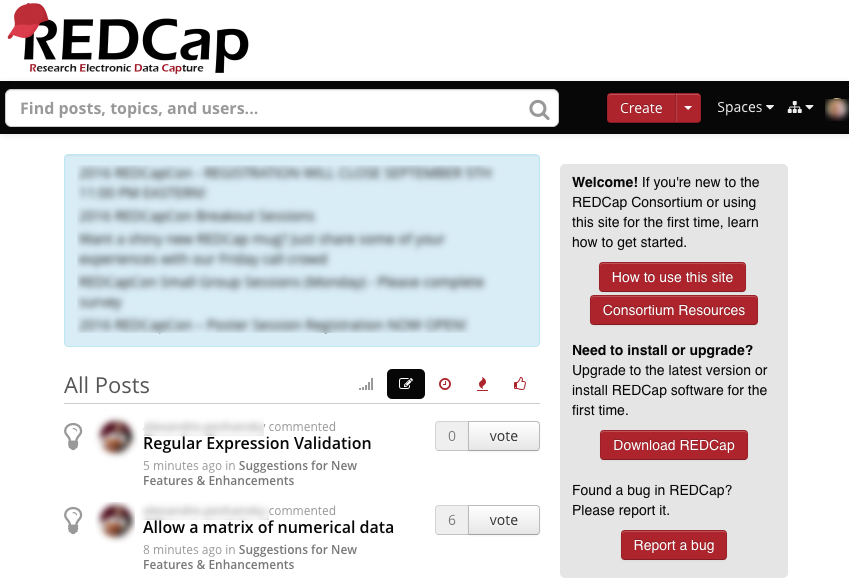In the fast-evolving world of clinical research, managing data efficiently and accurately is paramount. Enter REDCap (Research Electronic Data Capture), a secure web application designed to support data capture for research studies. With a strong focus on improving data quality and streamlining management processes, REDCap has become an indispensable tool for clinical researchers globally. This article explores how REDCap is revolutionizing clinical research data management, focusing on its applications in various case studies.
Toc
- 1. Introduction to REDCap
- 2. Why REDCap is Essential for Clinical Researchers
- 3. Case Studies Highlighting REDCap’s Impact
- 4. Key Features of REDCap
- 5. Related articles:
- 6. Potential Challenges and Limitations
- 7. Recommendations for Effective Usage
- 7.1. Comprehensive Training Programs
- 7.2. Standardized Data Collection Protocols
- 7.3. Technological Infrastructure Assessment
- 7.4. Planned Data Migration Strategy
- 7.5. Regular Permission Reviews
- 7.6. User Feedback Mechanisms
- 7.7. Collaborative Environment Encouragement
- 7.8. Integration with Other Tools
- 7.9. Attention to Compliance and Regulatory Standards
- 8. Conclusion
Introduction to REDCap

REDCap is a user-friendly, web-based platform that enables researchers to build and manage databases for collecting, storing, and analyzing data in clinical research studies. Developed by a team at Vanderbilt University, REDCap was first released in 2004 and has been continuously updated and improved since then.
The platform is highly customizable and can be adapted to suit the specific needs of different research projects. It offers various features such as data validation, electronic surveys, longitudinal data collection, real-time data entry checks, and secure data storage – making it an ideal tool for managing complex clinical research data.
What is REDCap?
REDCap is a metadata-driven software solution for creating and managing online surveys and databases. Developed by Vanderbilt University, it is widely used in academic, nonprofit, and government organizations for research studies. It offers a versatile platform for data collection and management, providing features such as automated export procedures, audit trails, and advanced field validation.
Advantages of Using REDCap
One of the main advantages of using REDCap is its ability to improve data quality. With built-in validation rules and real-time data entry checks, it helps researchers identify and correct errors in data entry, ensuring accurate and reliable results. Additionally, the platform offers secure data storage and backup options, providing peace of mind to researchers.
Moreover, REDCap is highly customizable and can be tailored to fit the specific needs of different research projects. This flexibility makes it suitable for a wide range of studies – from basic surveys to complex clinical trials.
Why REDCap is Essential for Clinical Researchers

REDCap has become an indispensable tool for clinical researchers due to its efficiency, user-friendliness, and data security features. Its applications are wide-ranging and have been utilized in various case studies across different research disciplines.
Streamlined Data Collection
REDCap facilitates streamlined data collection through its intuitive user interface and robust functionalities. Researchers can design and distribute surveys or data entry forms with ease, ensuring a smooth data collection process. The platform supports various types of data fields, including text, numerical, multiple-choice, and even calculated fields, enabling comprehensive and precise data capture. Additionally, REDCap’s mobile app allows offline data collection, which is crucial for studies conducted in remote or resource-limited settings.
Enhanced Collaboration and Accessibility
Collaboration is a key aspect of clinical research, and REDCap excels in fostering communication and cooperation among research team members. Users can easily share databases with collaborators, assigning different levels of access and permissions according to each member’s role. This ensures that data integrity and confidentiality are maintained while facilitating teamwork. Moreover, REDCap’s web-based nature means that researchers can access the platform from anywhere with an internet connection, providing flexibility and convenience.
Data Security and Compliance
In the realm of clinical research, data security and compliance with regulatory standards are paramount. REDCap provides robust security features, including data encryption, user authentication, and detailed audit trails that track every modification made to the database. These features help safeguard sensitive information and ensure compliance with regulations such as HIPAA (Health Insurance Portability and Accountability Act) and GDPR (General Data Protection Regulation).
Case Studies Highlighting REDCap’s Impact

1. Pharmaceutical Company Multi-Site Clinical Trial
A major pharmaceutical company utilized REDCap to manage data collection and administration for a multi-site clinical trial that spanned the US and Europe. By using REDCap, the company was able to standardize data collection across all sites, ensuring consistency and accuracy. This streamlined approach not only saved time but also reduced costs associated with data management.
2. University Research Team Longitudinal Study
A university research team adopted REDCap for a comprehensive longitudinal study. The team reported a significant reduction in data entry errors and an improvement in data analysis efficiency. REDCap’s advanced features, such as branching logic and calculated fields, enabled the team to capture complex data efficiently.
3. Non-Profit Organization Community Health Surveys
A non-profit organization implemented REDCap to conduct community health surveys. The platform’s flexibility allowed the organization to tailor surveys to gather specific health data, enhancing the quality and reliability of their reports. The organization also benefited from REDCap’s ability to generate instant reports, aiding in timely decision-making.
4. Private Research Facility Biobank Management
A private research facility used REDCap to manage its biobank data. The facility found REDCap’s audit trail feature particularly valuable, as it allowed them to track all changes made to the data, ensuring transparency and accountability. This was crucial for maintaining the integrity of their biobank.
Key Features of REDCap

Customizable Reporting and Dashboards
One of the standout features of REDCap is its customizable reporting and dashboards. Researchers can create bespoke reports that pull specific data points, which can be used to monitor progress, assess trends, and make informed decisions. These reports can be tailored to display data in various formats, such as tables, charts, and graphs, providing a visual representation that facilitates easier interpretation. Furthermore, dashboards offer a real-time overview of the project, displaying key metrics at a glance and enabling quick access to essential information.
Seamless Integration with Other Systems
REDCap’s ability to integrate seamlessly with other data management and statistical software platforms enhances its utility. Researchers can export data effortlessly to programs like SPSS, SAS, R, and STATA for advanced statistical analysis. This interoperability ensures that data captured within REDCap can be analysed comprehensively, allowing for more robust findings. Additionally, APIs (Application Programming Interfaces) enable REDCap to connect with other systems, further extending its functionality and enabling streamlined workflows.
- https://taulua.net/unlocking-your-nursing-future-online-np-programs-explained/
- https://taulua.net/navigating-your-future-choosing-the-right-nursing-college/
- https://taulua.net/unlocking-opportunities-navigating-facebook-jobs/
- https://taulua.net/unraveling-the-wonders-of-immunology-a-basic-guide/
- https://taulua.net/unlocking-your-career-path-with-linkedin-a-comprehensive-guide/
Training and Support Resources
Understanding the platform’s nuances is facilitated by REDCap’s extensive training and support resources. Vanderbilt University and other partnering institutions frequently offer workshops, webinars, and training modules that help users master the software. The platform also provides comprehensive documentation, FAQs, and a user community forum where researchers can seek advice and share best practices. Such resources ensure that users can leverage REDCap’s full potential, regardless of their initial familiarity with the tool.
Potential Challenges and Limitations

While REDCap offers numerous advantages, it’s important to acknowledge potential challenges and limitations associated with its use. One notable challenge is the initial learning curve that new users may face. Despite the availability of training and support resources, some users might require a substantial amount of time to become proficient with the platform’s features. Additionally, while REDCap’s flexibility is a strength, it can also lead to inconsistencies if users do not adhere to standardized protocols when designing surveys and data collection forms. Such inconsistencies can complicate data aggregation and analysis across different projects.
Platform Compatibility Issues
Another challenge is the potential incompatibility with certain devices or web browsers. While REDCap is generally accessible via most web browsers, some older versions or less common browsers may not support all features, leading to a suboptimal user experience. Ensuring that users have the necessary technological infrastructure is crucial for the smooth operation of the platform. Additionally, mobile compatibility, although available, may not offer the same level of functionality as the desktop version, potentially limiting data collection in fieldwork settings where mobile devices are predominant.
Data Migration Complexity
Migrating data from other systems into REDCap can also be complex and time-consuming. Legacy systems may store data in formats that are not directly compatible with REDCap, necessitating extensive data cleaning and transformation. This may require technical expertise and can temporarily slow down research activities. Ensuring proper planning and allocation of resources for data migration can mitigate these challenges.
User Management and Permissions
Managing user roles and permissions effectively is vital for maintaining data security within REDCap. However, defining and implementing appropriate permissions can be complex, particularly in large, multi-disciplinary research teams where roles may frequently change. Misconfigured permissions can either lead to unauthorized data access or restrict essential functions for team members, impacting the efficiency of the research process. Regular reviews and updates of user roles and permissions are essential to address this issue.
Recommendations for Effective Usage

To maximize the potential benefits of using REDCap, it is crucial to consider certain factors during implementation and usage.
Comprehensive Training Programs
To mitigate the initial learning curve associated with REDCap, institutions should implement comprehensive training programs. These programs could include in-person workshops, guided online tutorials, and detailed user manuals to ensure all team members are competent in using the platform. Tailored training that addresses specific roles and projects within the organization can further enhance efficacy and user adoption.
Standardized Data Collection Protocols
Implementing standardized protocols for survey and data collection forms is essential to maintain consistency across projects. Establishing clear guidelines and templates for form creation can prevent discrepancies and facilitate easier data aggregation and analysis. Regular audits and reviews should be conducted to ensure adherence to these standards.
Technological Infrastructure Assessment
Prior to rolling out REDCap, an assessment of the technological infrastructure should be undertaken. This includes verifying that all devices and web browsers used by the team are compatible with the platform’s requirements. Investing in up-to-date hardware and ensuring robust internet connectivity can significantly enhance the user experience.
Planned Data Migration Strategy
Developing a clear strategy for data migration from existing systems into REDCap is crucial. This should involve a thorough assessment of the data formats currently in use and a plan for data cleaning and transformation. Engaging technical experts to oversee this process can streamline the transition and minimize downtime.
Regular Permission Reviews
To maintain data security and functional efficiency, regular reviews of user roles and permissions should be instituted. A designated administrator can be tasked with monitoring and updating permissions as team roles evolve. Implementing a clear protocol for requesting and approving permission changes can further safeguard data integrity and accessibility.
User Feedback Mechanisms
Establishing a mechanism for continuous user feedback can help improve the overall functionality and user satisfaction of REDCap. This could include regular surveys, feedback forms, or a suggestion box where users can report issues or suggest improvements. Addressing these concerns promptly can enhance the usability and effectiveness of the platform.
Collaborative Environment Encouragement
Promoting a collaborative environment among users can greatly enhance the effectiveness of REDCap within an institution. Encouraging the sharing of best practices, tips, and troubleshooting solutions through regular meetings, forums, or dedicated online communities can foster a spirit of teamwork and continuous improvement. Collaboration not only aids in quicker problem resolution but also inspires innovative uses of the platform that others may not have considered. Regularly scheduled knowledge-sharing sessions or workshops can provide users with a platform to showcase their projects and methodologies, further enriching the collective expertise.
Integration with Other Tools
Integrating REDCap with other research and administrative tools can streamline workflows and increase overall efficiency. For instance, linking REDCap with statistical software such as SPSS, R, or SAS can enable seamless data analysis. Similarly, integration with project management tools and electronic health records (EHR) systems can centralize research activities and ensure data consistency across platforms. Institutions should explore available APIs and integration options to maximize REDCap’s interconnectivity and functionality within their existing tech ecosystem.
Attention to Compliance and Regulatory Standards
Ensuring that data collection and management practices within REDCap comply with relevant regulatory standards is imperative. Institutions engaged in healthcare research, for example, must adhere to HIPAA guidelines for patient data confidentiality. Regular training on compliance requirements and the development of internal policies to safeguard sensitive information are crucial steps. Conducting regular audits and updates to data security protocols can help institutions stay compliant with evolving regulations, thereby protecting both the research and its subjects.
Conclusion
In conclusion, while REDCap presents some challenges, the platform’s robust capabilities and potential for enhancing research productivity outweigh the limitations. By implementing comprehensive training programs, maintaining standardized data collection protocols, assessing technological infrastructure, strategically planning data migration, conducting regular permission reviews, and establishing user feedback mechanisms, institutions can optimize the use of REDCap to its fullest potential. With careful planning and continuous improvement, REDCap can serve as an invaluable tool for researchers, enabling them to manage and analyze data effectively, streamline project workflows, and ultimately drive impactful research outcomes.












